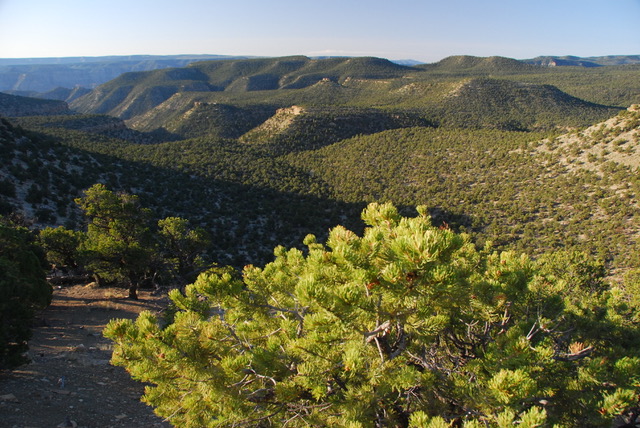Last Earth Day, President Biden issued an executive order calling on the Forest Service and Bureau of Land Management (BLM) to conserve mature and old-growth forests as a climate solution. This was a great step toward meaningful protections and policy, but now it’s up to us to ensure that this turns into real and lasting changes in how federal agencies manage —and protect—older forests and ecosystems.
In response to the executive order, the Department of Agriculture and the Department of Interior have opened an official public comment period to solicit feedback on how “to define, identify, and complete an inventory of old-growth and mature forests on federal lands.” The deadline for public comments is Tuesday, August 30th.
It is critical that we demonstrate widespread, overwhelming public support from every corner of the country for urgent action to permanently protect mature and old growth forests across all federal lands and, for wild lands here in Utah, to emphasize the importance of protecting old-growth dryland forests of piñon pine and juniper.
Click here to submit your comments via the U.S. Forest Service web portal.

In your comments, please urge the Biden administration to conduct a comprehensive inventory of mature and old-growth piñon pine and juniper forests on the Colorado Plateau during this first stage of implementing the president’s executive order. It is important that ALL old-growth and mature forests, in dryland ecosystems as well as the better-known alpine and Pacific Northwest environments, are conserved for the benefit of wildlife, air and water quality, climate adaptation, and so much more.
Here are some key points to convey:
- Covering 15% of the land area in five states (Arizona, Colorado, Nevada, New Mexico, and Utah), piñon pine and juniper forests are subject to temperature extremes and limited moisture availability. These forests are often the sole woodland provider of wildlife habitat, vegetative cover, watershed protection, and traditional food and medicine gathering in dryland and arid BLM-managed lands across the West.
- Single-leaf piñon pine trees can reach ages of up to 600 years and juniper can reach ages of up to 1,600 years. These historic forests and associated undisturbed biological soil crusts store a disproportionate amount of carbon in dryland ecosystems, and are more resistant to disruptions caused by climate change.
- Old-growth piñon-juniper forests are home to more than 70 bird species and are often the only suitable habitat for many of these species, whose populations are currently declining rapidly under intense pressure from climate change, development, and drought.
- Although they cover hundreds of millions of acres and provide irreplaceable habitat and ecosystem benefits, piñon-juniper forests are among the least studied and most ignored North American forest types. The BLM should ensure that its inventory and criteria for mature and old-growth forests include piñon pine and juniper forests, which are the largest forest type by acreage managed by the agency.
As you know, threats to piñon-juniper forests on western public lands are many, including landscape-level mechanical deforestation projects (mainly for the benefit of cattle grazing) that tend to indiscriminately remove trees, including those that have existed on the landscape since long before Europeans landed on this continent. Making sure these ancient piñon-juniper forests and their characteristics are included in any nationwide definition of mature and old-growth forests (which will then be used to protect these areas) is extremely important, and would be a huge win for protecting the redrock wilderness.
During this comment period, the BLM and Forest Service are focused on collecting input and information to help map and define old-growth and mature forests that they manage across America’s public lands. There are limited chances for the public to weigh in, so we need to take advantage of every opportunity. Policy decisions and recommendations for how to protect these forests and mitigate climate change, logging, development, and other impacts will happen in the next stage, and we’ll be sure to alert you to these engagement opportunities as they arise.
Click here to submit your comments by the August 30th deadline.
Thank you!

